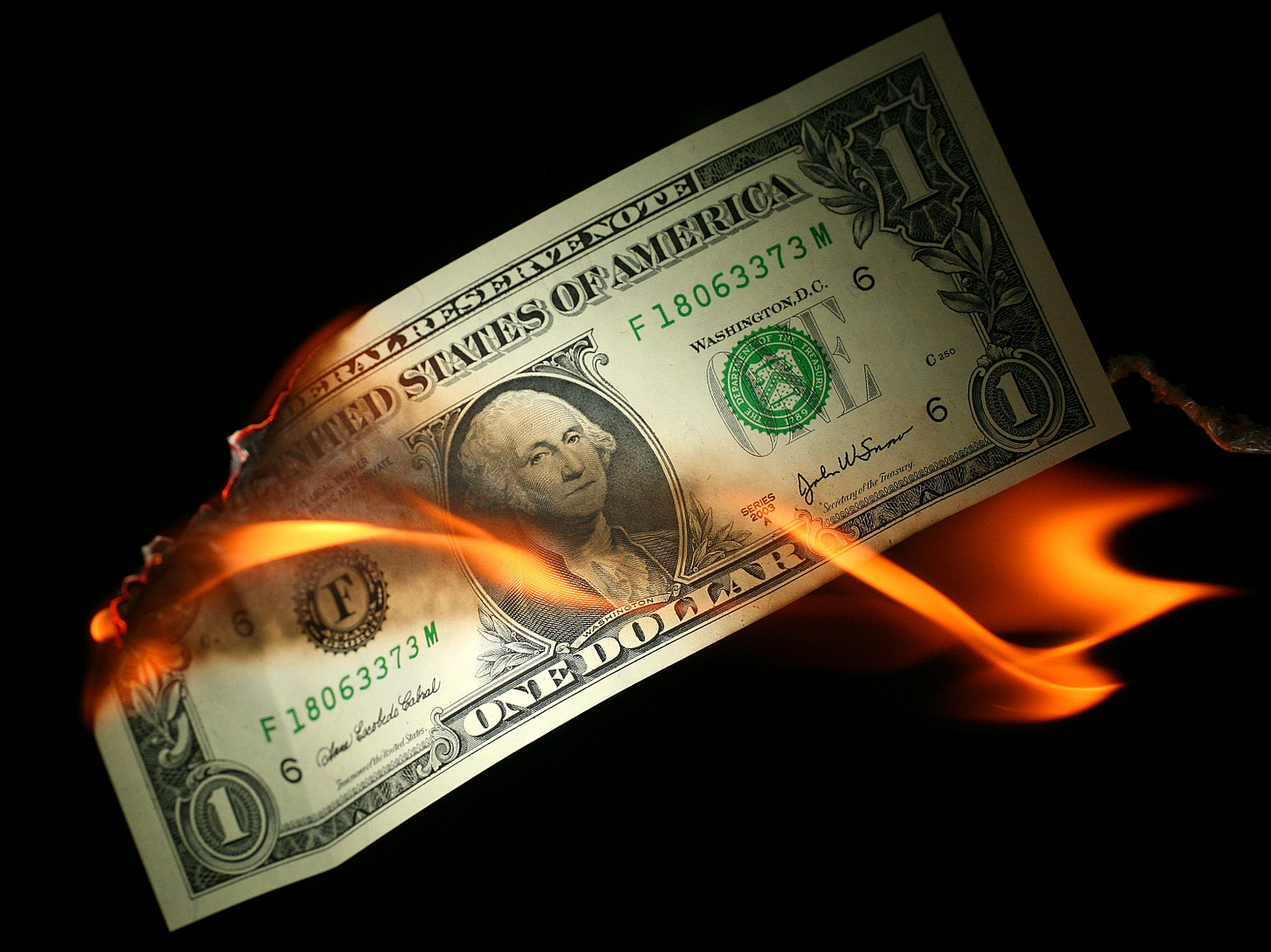Clearing Up Tesla Q419 Results
Questionable revenue & “profit” again. Wonky cash flow & working capital hint why Tesla’s not paying off debt. MY will likely overtake M3, as I expected. Why my 2020 model didn't need much updating.
Tesla Motors (TSLA US) reported higher fourth-quarter revenue and profit versus market expectations plus guidance for 500,000 deliveries for 2020, up 36%, boosted by Shanghai production and a planned rollout of Model Y by the end of the quarter.
Never mind that reported profit fell 25% on essentially flat revenue despite a 23% increase in deliveries versus last year. The stock jumped 14% to $581 after the market closed Wednesday, and was trading at $645 (up 11%) Thursday morning which indicated market cap at a stunning $116 billion.
And yet Tesla's numbers don't hold up under scrutiny, which threatens its ambitious guidance for 2020 as well as its euphoric market valuation.
As I projected again, most recently in Tesla: Into Thin Air (1/16/20), all of the reported revenue growth and profit and free cash flow can be traced to noncore and unusual items and aggressive accounting.
Tesla revamped its EBITDA calculation so dramatically the margin was boosted by 360 bps and indicated leverage was dubiously reduced by 2 full turns.
Objects and Prospects Are Weaker Than They Appear
Reported net income tracked the high end of my estimate at $105 million, down 27%. Auto sales revenue was barely changed at $6.1 billion (up 1%) despite total deliveries up 23%. Instead, the tiny Energy Generation and Services & Other segments each generated a higher revenue gain so consolidated revenue was up a meager 2.2%.
Actually it was even less. Energy credits contributed $130 million (up 40%) with another $130 million indicated from deferred revenue—leaving core auto revenue down nearly 8% and consolidated revenue down 2% versus similarly adjusted results last year.
Reported auto segment gross profit fell 7% to $1.43 billion, and was down 14% to $1.17 billion excluding boosts to revenue counted so far, confirming my concerns after more than a year of substantial price discounts, expensive incentives, and weakening mix as cheaper Model 3 dominates sales while pricey Models S & X plunge. Gross margin was reported as 22.5%, down 180 bps, but actually fell 274 bps to 19.2% excluding boosts to revenue counted so far.
As I have noted previously, we have to wait until the 10-K is filed in mid-February to confirm whether Tesla again juiced revenue and gross margin even more by also tinkering with warranty reserves and recorded resale value guarantees, for example. We also won't know until then how much US revenue dropped on deliveries down 27%, following the 39% drop in US revenue in the third quarter when deliveries fell 20%.
The skinny $200 million in reported gross profit that remained, after $7 billion in consolidated revenue, was ultimately evaporated mostly by higher taxes and "other" expenses, offset somewhat by further cuts in SG&A and, of course, R&D which dropped to less than 5% as a percentage of revenue despite a growing pipeline.
Reported net income dropped $38 million (25%) to $105 million. Excluding the boosts we know about, the result actually was a net loss of $158 million versus a similarly adjusted $38 million loss last year.
Then there was EBITDA, which was even more surprising. Tesla has been creative with EBITDA before, e.g. including the share owed to minority interests in addition to other boosts sited above. This quarter the calculation was changed to add back stock-based compensation which, conveniently, also jumped on higher CEO compensation.
Unfortunately, it's not uncommon anymore to see companies add back stock-based compensation to boost reported EBITDA, and I'm wary when this understates operating expenses so much it drastically changes perceptions of the company's profitability and financial stability as it does with Tesla.
Using the previous method of calculation, which of course includes the boosts to revenue and margins cited above, reported EBITDA for this quarter would be $911 million. That's up a mere $35 million (1.7%) versus the previously reported $896 million last year, with a 12.3% margin down 0.6 bps. The new calculation added $281 million in stock-based compensation which was up $76 million versus last year—a 37% jump which far outpaced every other line item. As a result, reported EBITDA was up $92 million (13.2%) to $1.175 billion versus $1.038 billion as similarly adjusted last year.
The change was even more dramatic for annual results:
The boosts to reported revenue, which carried through to EBITDA, certainly were meaningful, but adding back stock-based comp generated a stunning spike to reported EBITDA.
Notice that fourth-quarter EBITDA barely improved under the previous calculation, which made sense given weak revenue and gross profit and the feeble net "profit" reported. The new calculation boosted EBITDA by more than 13% and improved margin by 150 bps. The change for full-year results produced a whopping 25% increase in reported EBITDA with a 100 bps improvement in margin—when even reported auto segment gross margin declined 220 bps.
Even more troubling is the complete revision of perceived credit risk this change has generated. Leverage on GAAP EBITDA and the old calculation improved more than a full turn but remained uncomfortably high at 6.3-6.4x. It was slashed to 4.5x under the new calculation.
But when we strip out non-operating, accounting, and unusual item enhancements ($1.4 billion, up 102%) and retain stock-based compensation ($900 million, up 20%) as a contributing measure of core compensation expense, leverage increases more than 2 full turns y/y to 12.8x.
Both of these risk profiles can't be true. I'm inclined to focus on the one that more closely reflects core operating performance which has remained persistently weak.
Cash Flow and Working Capital Don't Look Right
Tesla reported $1,425 billion generated in cash from operations for the quarter, the highest yet. Reported free cash flow was $1 billion, $976 million counting spending on solar systems, boosted by holding reported capex at just $412 million (5.6% of revenue). True capex is much higher since Tesla is funding part of its Shanghai spending with leases.
Moreover, not much cash actually materialized from core operations—again.
Tesla starts off the cash flow calculation by claiming net income that included $27 million actually owed to minority interests. Depreciation and stock-based compensation (there it is again) are noncash items totaling $577 million and $281 million, respectively. There goes $885 million. Next up, the mysterious "Other" category—nonoperating so it's out. This leaves $231 million generated from working capital plus $105 million in "profit" which I traced to $130 million in deferred revenue—so not cash—and $133 million in energy credits—so not from core operations; e.g. selling cars and solar energy products for fun and profit.
This leaves a paltry $73 million generated from operations, thanks to working capital.
But wait, Tesla only generated $29 million from inventory versus the second quarter, and inventory was up $439 million versus last year to $3.55 billion (14% of revenue) despite delivering 15% and 23% more cars, respectively.
This nominal cash was eclipsed, again, by spiking accounts receivable which jumped nearly $200 million and prepaid expenses which were up $53 million. Indeed both have far outpaced revenue growth every quarter for more than a year. This is particularly strange for accounts receivable since Tesla collects cash before delivery for virtually every cars it sells, also comprising most sales, a concern I have raised since accounts receivable more than doubled in the third quarter 2018 and stayed elevated ever since (see Great Magic Trick Tesla; Now Do It Again, 11/29/18).
Once again, the lion's share of cash "generated" in working capital came primarily from stretching accounts payable which were up $303 million.
That's why Tesla's quick ratio—a measure of solvency and liquidity—remained deep in troubled country at 0.7x versus stable at 1.0x and only modestly better versus 0.5x last year even with nearly twice as much cash on the balance sheet at $6.28 billion ($5.54 billion excluding customer deposits).
That cash came mostly from borrowing and not paying bills on time. While Tesla bragged about paying off $500 million in debt during the quarter, it actually just switched recourse debt for nonrecourse debt and added a significantly increased credit line for the Shanghai plant.
Debt and leases increased to $13.42 billion, up $76 million versus the second quarter and up $1.45 billion (12%) versus last year—which is why leverage actually spiked on nearly flat EBITDA.
Tesla's more precarious condition, and its implied expectation of trying times still ahead, better explains why it's sitting on a pot of cash and yet still borrows and increases its credit lines every quarter instead of paying off debt. Management won't even project 2020 CAPEX, which likely will continue to be funded in part by leases, and it also hasn't explained how Tesla plans to deal with the potential settlement of $4.3 billion in convertible notes that are all in the money now (see what I expect in Tesla: Into Thin Air, 1/16/20).
Instead, CEO Elon Musk said on the earnings call, "Leading the company to pay down debt, doesn't sound like a wise move."
Ok. Then it's reasonable to expect Tesla will continue adding debt and leases over the next two years as it continues to expand its plants in Freemont and Shanghai and starts building its new plant in Germany. Tesla remains cagey about launch dates for CyberTruck, the Roadster, and the Semi, but it expects deliveries of Model Y by the end of the first quarter.
And while accelerated Model Y deliveries have helped juice Tesla's stock price, there's more to the story.
Party or Bust
With 2019 ending on a high note, most investors have seemingly forgotten the fourth quarter and moved on to a fabulous 2020. Tesla projected 500,000 deliveries for the year, up 36%, on the launch of Model Y, the ramp-up of the Shanghai plant, and continued expansion of Model 3 across Europe and China.
However, it's not just about how many cars Tesla can make. How many can it sell? I've already tracked how Model 3 demand started slipping in new US markets with six months of its 2018 launch, and its full introduction into Europe and China will lap in the second half of this year. Tesla already felt the need to slash the price of locally made Model 3s nearly two weeks before the first car was delivered in Shanghai. I still expect Model Y is more likely to hasten Model 3's decline rather than augment overall growth.
As I noted in my last report, Tesla: Into Thin Air, 1/16/20, plenty of challenges lie ahead for 2020:
As the story now goes, demand is strong, Tesla is profitable, and it's flush with positive cash flow and a fat bag of cash. China production is off and running and Model Y is on its way by summertime, sooner than expected. Even better, CyberTRUCK!
What can go wrong?
Demand has hardly been proven to be sustainable. US trends offer the most important indicator of the sustainability of Tesla's future demand after the surge from new market launches. What we've seen is unrelenting demand erosion for Model 3 even after a year of multiple rounds of price cuts plus expensive incentives. This helps explain why Tesla is so anxious to accelerate the launch of Model Y, and signals that Model Y sales will likely cannibalize Model 3, as I have projected, rather than augment growth.
Model 3 has wrestled with demand erosion despite strong prevailing business and economic conditions, and given how similar Model Y is to Model 3 it may fare little better.
The pressure will intensify if global EV sales sink as I expect this year—even in China—as favorable conditions fade as we've already observed with traditional auto sales. Tesla hasn't managed to build strong, solidly profitable operations or financial stability after 16 years, including the last decade during the longest economic recovery on record. It could struggle mightily in a weakening environment and while facing ever more formidable competition from its stronger, better-capitalized rivals. Faltering demand for EV batteries in the US and China signal weakening sales trends well into 2020, and potentially longer.
Tesla already seems concerned about China, arguably its most important market now. The promised price increase on imported Model 3s apparently has been tabled, and Tesla instead has been talking about reducing prices by as much as 20% on China-made Model 3s. A 9% price cut was implemented just before the first local deliveries began a week ago. This followed the 12-26% price cut announced in November on long-struggling Models S&X.
Tesla is already giving up margin. Tesla still can't make a dime of profit on its low-end Model 3 made in the US. Why would it proactively sacrifice precious margin in China, potentially its biggest market and where it claims much lower and rapidly falling production costs, if it believes demand is as strong as promised?
Tesla already has stumbled with Chinese buyers. Model 3 had a rocky launch in China, with lower than expected demand not helped by Tesla's volatile sales strategies. Price-conscious customers also got irritated by Tesla's frequent price reductions, and angry buyers even protested Tesla's stores when prices were lowered significantly after their purchases. Prospective buyers will likely hold out for even lower prices already signaled.
A significant chunk of potential buyers in all Model 3 markets probably will decide to hold out for Model Y now that its launch is imminent. It's a crossover, it's a little bigger than Model 3 (ignoring the ridiculously cramped third-row seating), and it's likely to come at much lower prices than currently projected—mitigating its promoted increased profitability. [Update: And now we know it also will have essentially the same range and cost only $4,000 more than Model 3—likely less later when the inevitable price cuts start.]
CyberTruck is little more than a party favor. I have another report in progress detailing practical problems I see with the CyberTruck, but there's no rush since it probably won't arrive for another 2-3 years, or more. We really have no idea what it will be by then or how much it will cost. Tesla can't even guarantee the price on Model 3 a month from now. And if its botched big reveal is any indication, much less Tesla's long track record of bombastic promises that don't materialize (robotaxis? ride-hailing?), CyberTruck probably won't live up to its hype.
From Tesla: Into Thin Air, 1/16/20.
Lots To Fix, Not Much Time
It's not clear how many were listening, but Tesla warned that first-quarter results could be weak. The Shanghai plant has been shut down for at least two weeks because of the coronavirus, but I suspect results from January already were significantly softer given the expiration of subsidies and the imminent launch of Model Y which I expect will sap sales of Model 3.
Never mind, the stock already is trading at 40x my 2020 EBITDA estimate and still climbing. Of course, this also means there's no room for so much as a hiccup in Tesla's performance much less a cacophonous fart if it stumbles badly, as I expect.
I estimate 2020 revenue at $28.5 billion (up 16%) on deliveries below guidance at 452,400 (up 23%) on mostly incremental growth, particularly over the first 6-9 months of the year. I estimate $3.124 billion in EBITDA (up 5%; 11% margin), pressured by falling prices, weakening mix, and higher than expected costs, with reported free cash flow flat to down as much 60% depending on capex. Leverage on reported EBITDA is indicated at 5.3x, 6-7x using core EBITDA, on higher debt and leases increasing to $15-16 billion—see attached model.
TSLA 5.3% Senior Notes due 2025 are up half a point since my last report to 101.4 (5% ytw; 356 bps). This offers a skinny 54-67 bps of spread per turn of estimated 2020 leverage, more suitable for investment-grade credits versus volatile Tesla with its "Caa1/B-" badging from Moody's and Standard & Poor's. Maintain “Underperform."
Contact Us:
Disclaimer
This publication is prepared by Bond Angle LLC and is distributed solely to authorized recipients and clients of Bond Angle for their general use. In addition:
I/We have no position(s) in any of the securities referenced in this publication.
Views expressed in this publication accurately reflects my/our personal opinion(s) about the referenced securities and issuers and/or other subject matter as appropriate.
This publication does not contain and is not based on any non-public, material information.
To the best of my/our knowledge, the views expressed in this publication comply with applicable law in the country from which it is posted.
I/We have not been commissioned to write this publication or hold any specific opinion on the securities referenced therein.
Bond Angle does not do business with companies covered in its
publications, and nothing in this publication should be construed as a solicitation to buy or sell any security or product.Bond Angle accepts no liability whatsoever for any direct, indirect, consequential or other loss arising from any use of this publication and/or further communication in relation to this document.














